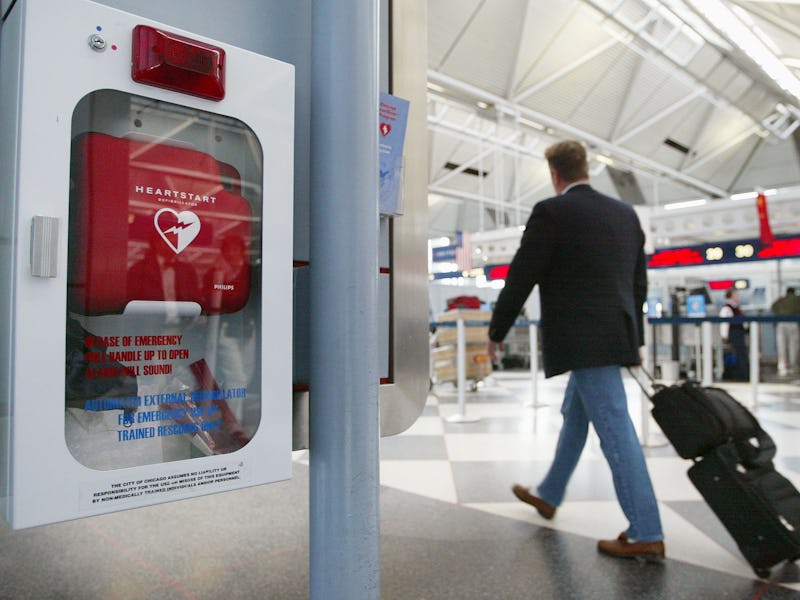This App Will Help You Find the Nearest Automated External Defibrillators
A time-saving app could make a huge difference in sudden cardiac arrest survival rates.

It’s well-known that automated external defibrillators (AEDs) can help save lives for people who go into sudden cardiac arrest. However, it’s not always well-known where you can find an AED outside of a medical setting. Now, a new app called AED-SOS may change that.
On November 9, 2015, researchers at the American Heart Association’s Scientific Sessions conference will present the findings of a study that measured whether an AED-finding app could help someone quickly locate an AED in case of an emergency.
AED-SOS was developed by researchers in Japan at Kyoto University and Coaido. The app includes features like finding the shortest route to an AED and sending push notifications to the closest emergency personnel.
The 52-person study pitted two groups of people with and without the app in a race against time to find the nearest AED after recognizing the signs of cardiac arrest in a mock emergency situation. The time it took responders to recognize cardiac arrest and deliver an AED was 202.2 seconds for those without the app, whereas it only took 133.6 seconds for those with AED-SOS.
Those seconds are vital when dealing with sudden cardiac arrest because administering the AED as soon as possible can increase a person’s chance of survival. According to the Mayo Clinic, signs of sudden cardiac arrest include loss of consciousness, sudden unresponsiveness, and abnormal breathing after a person’s heart stops functioning unexpectedly.
Here’s a video of AED-SOS in action in Japan:
While it’s unlikely that this app will be on your must-download list in the near future (Two Dots is just so much more enticing, right?), this would be a great resource for people who work and travel in highly frequented public locations or for those who live or work with at-risk individuals. AED-SOS could make a huge difference in the survival rates of people who experience sudden cardiac arrest.